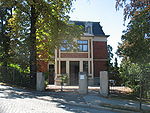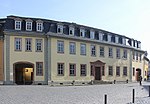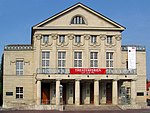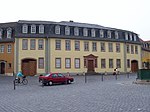Monument to the March Dead
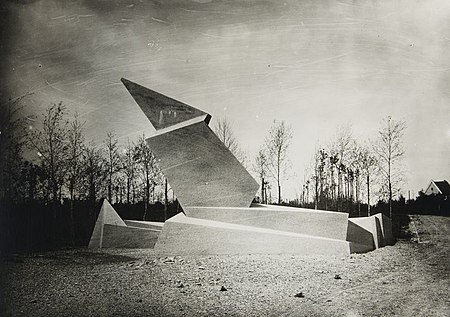
Monument to the March Dead (German: Denkmal für die Märzgefallenen) is an expressionist monument in the Weimar Central Cemetery in Weimar, Germany that memorializes workers killed in the 1920 Kapp Putsch. A 1920 design produced by Walter Gropius, in collaboration with Fred Forbát, was selected from those submitted in a competition organized by the Gewerkschaftskartell (Union Cartel) and Städtisches Museum Weimar.Although Gropius had said that the Bauhaus should remain politically neutral, he agreed to participate in the competition of Weimar artists at the end of 1920.The structure was built between 1920 and 1922. An unveiling ceremony for the memorial was held on May 1, 1922.Objecting to it politically and as an example of what it characterized as degenerate art, the Nazis destroyed the monument in February 1936.The structure was reconstructed in 1946.
Excerpt from the Wikipedia article Monument to the March Dead (License: CC BY-SA 3.0, Authors, Images).Monument to the March Dead
Berkaer Straße,
Geographical coordinates (GPS) Address Nearby Places Show on map
Geographical coordinates (GPS)
| Latitude | Longitude |
|---|---|
| N 50.968063 ° | E 11.321559 ° |
Address
Denkmal der Märzgefallenen
Berkaer Straße
99425 , Südstadt
Thuringia, Germany
Open on Google Maps
